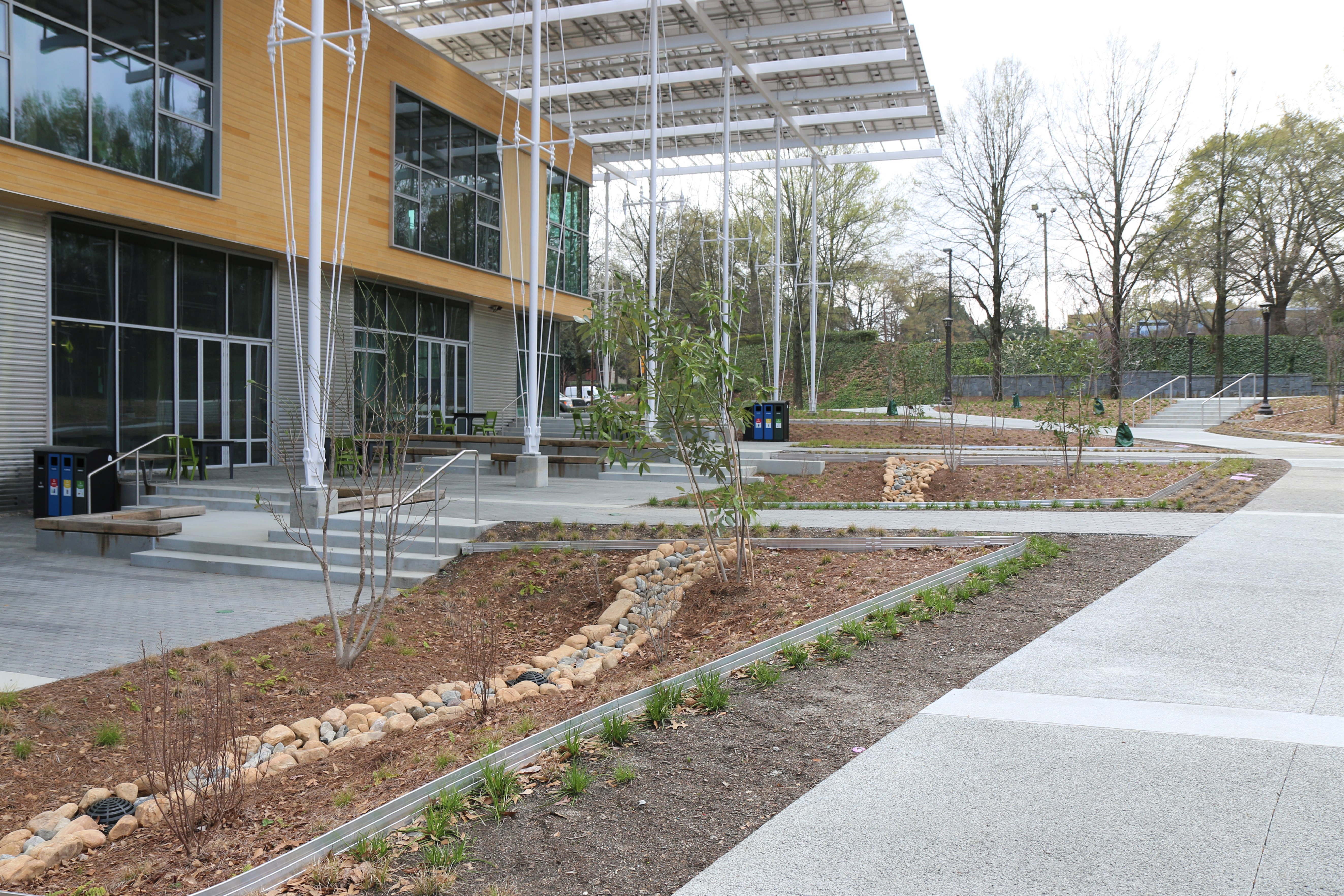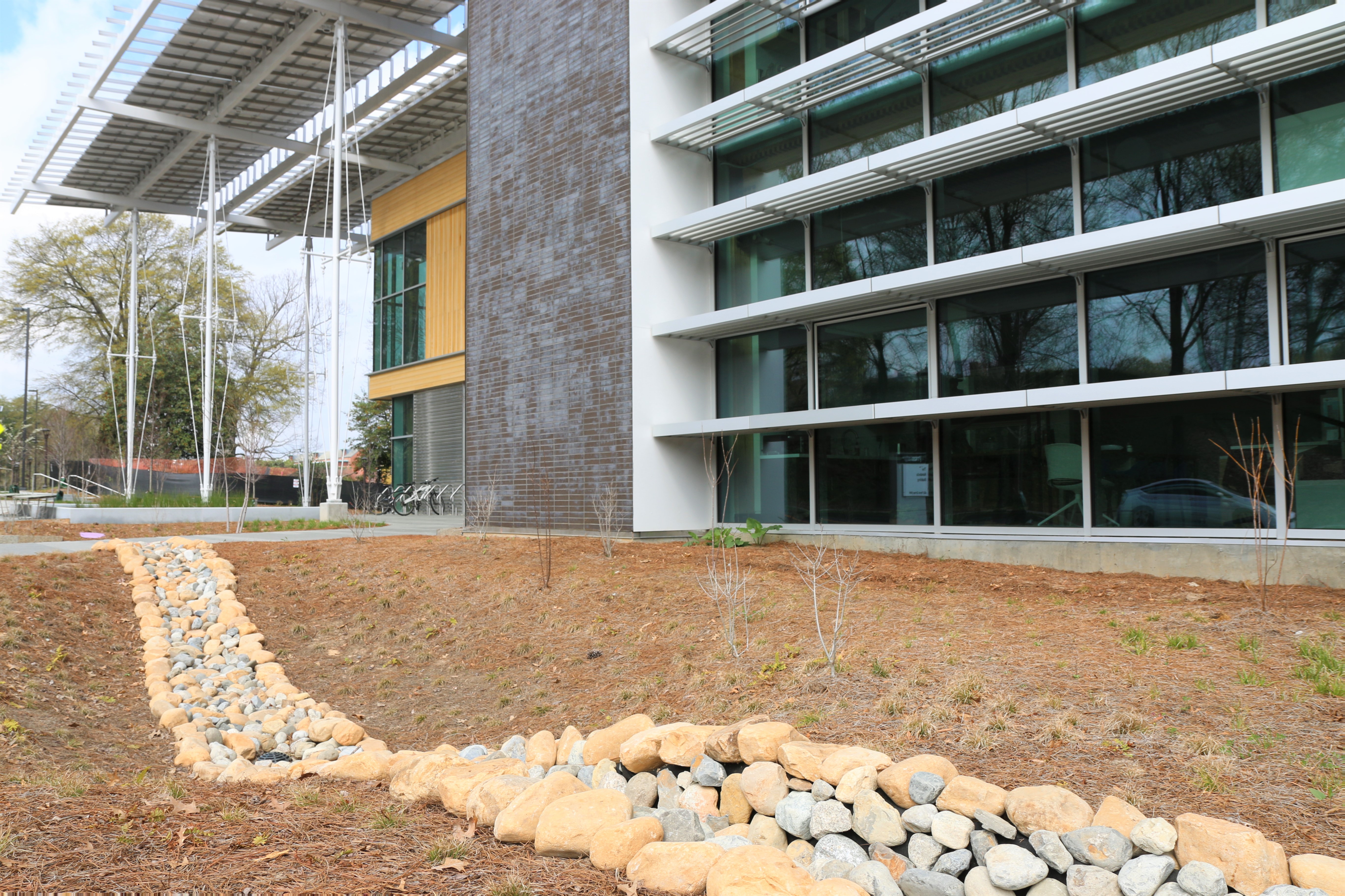Petal: Water
Imperative 05: Pet Positive Water
Rainfall Management
Our civilization's typical built environment is designed to treat natural occurrences as nuisances. For example, impervious surfaces turn rainfall, which can be beneficial, into stormwater that burdens infrastructure and often negatively impacts downstream communities.
In contrast, The Kendeda Building site treats rainfall as an asset. The outdoor areas have systems designed specifically to assist in the management of rainwater. Following the natural moderate slope from south to north, the porch terraces, or steps down, at appropriate elevations. This geometry accommodates cascading porch areas that support substantial water storage underneath the permeable pavers. Unlike a traditional stormwater management approach that concentrates water storage in a single area, this method of managing rainwater relies on dispersed locations along the sloped site in order to leverage gravity to assist in controlling the flow of water.

